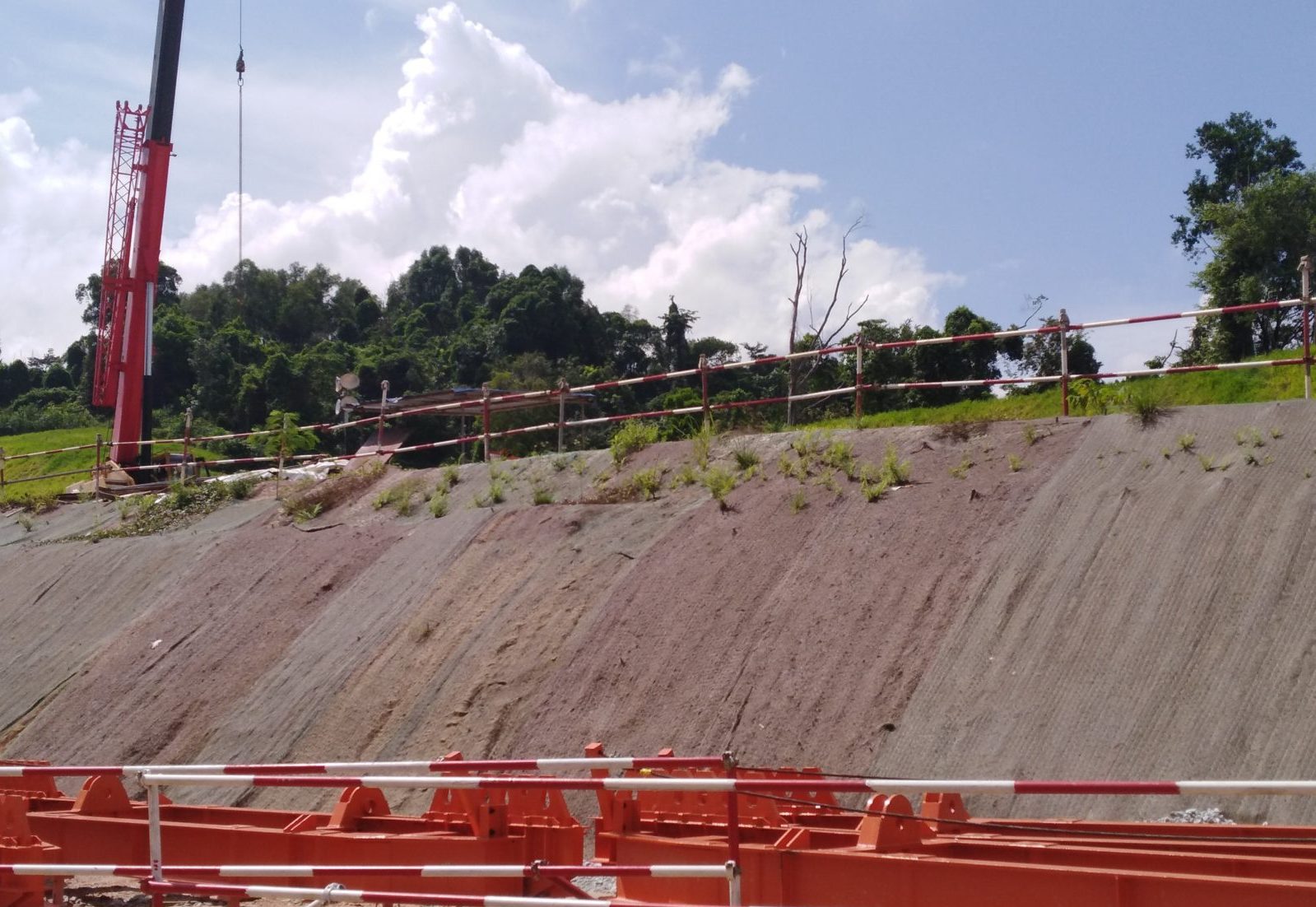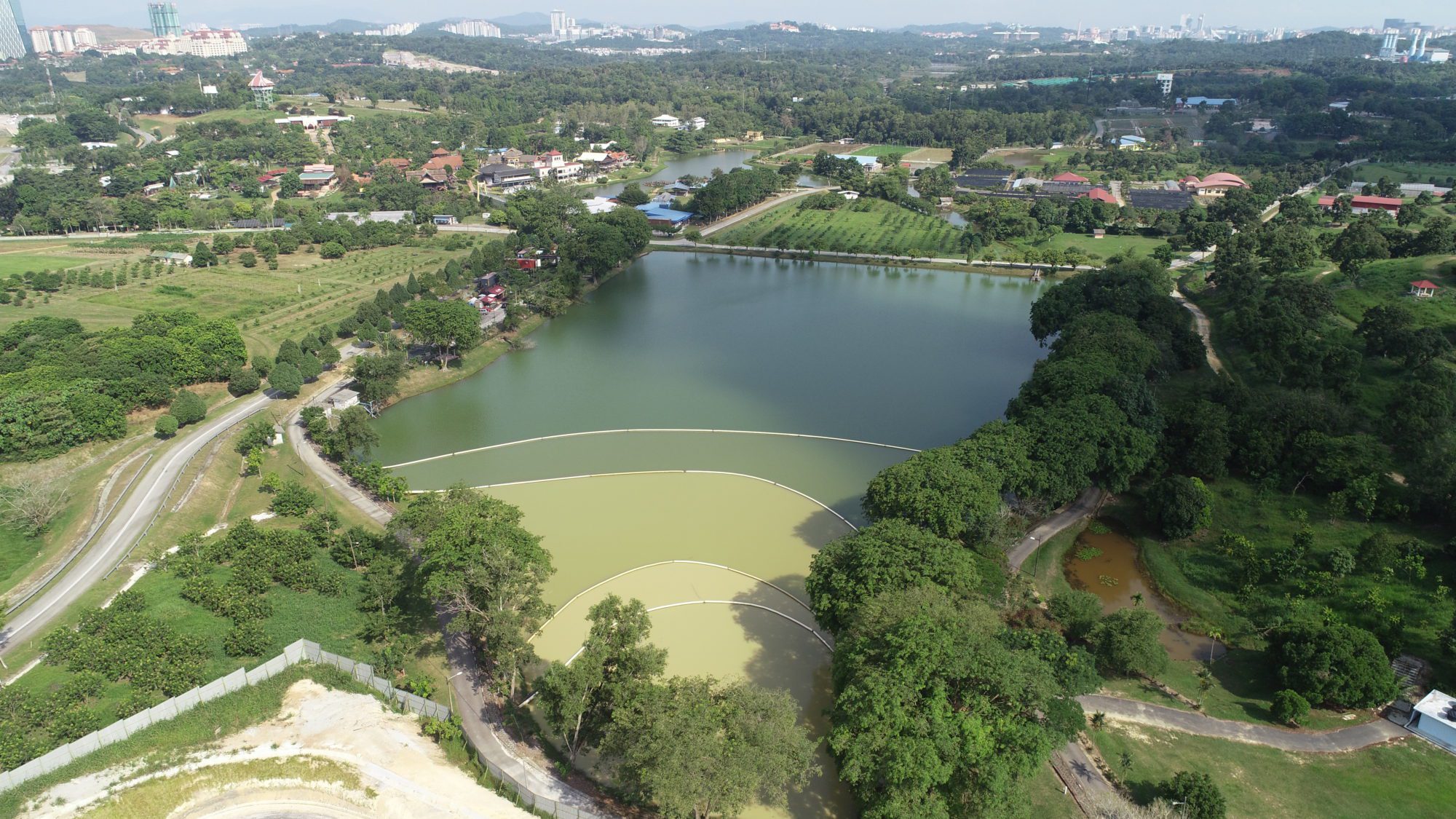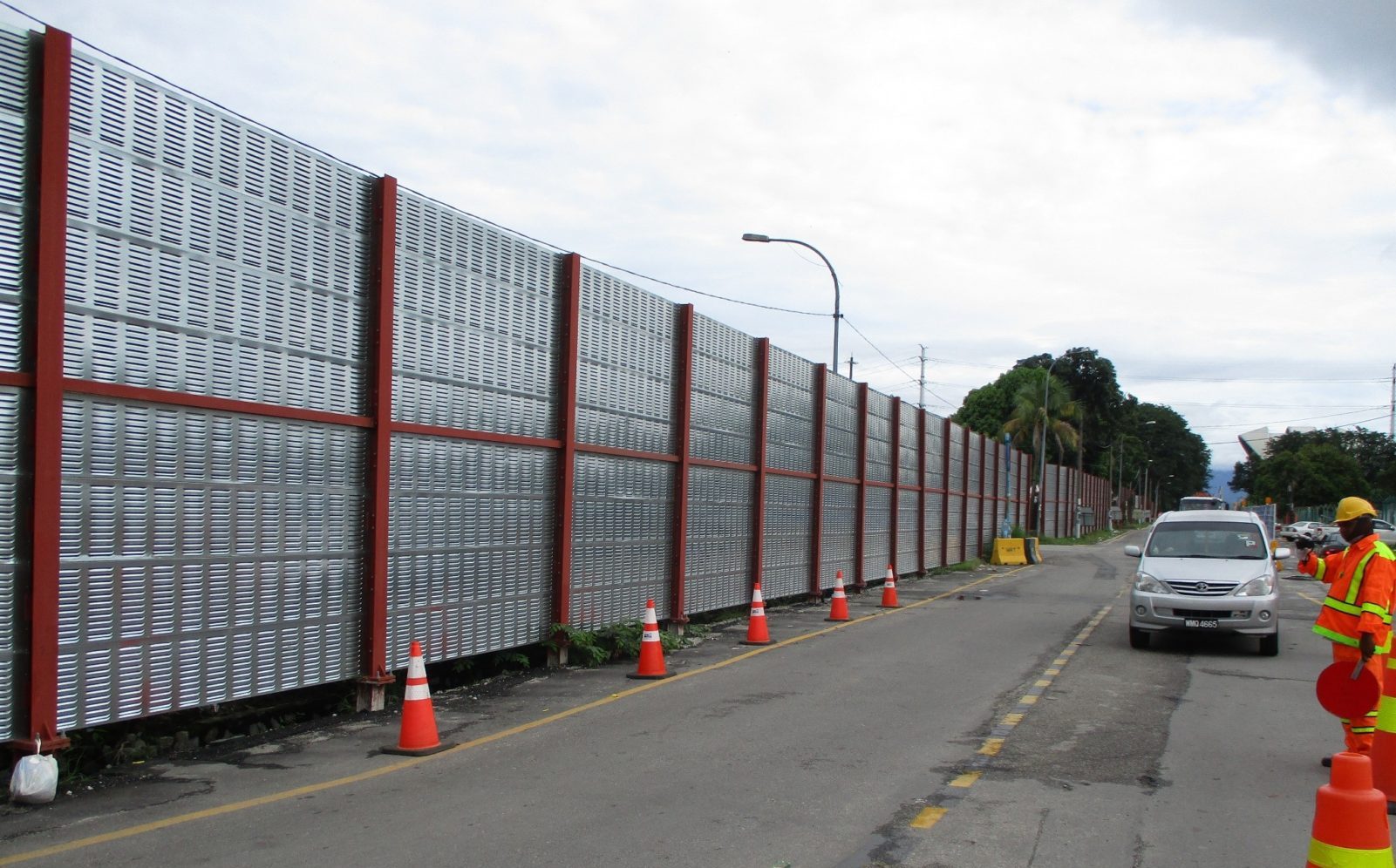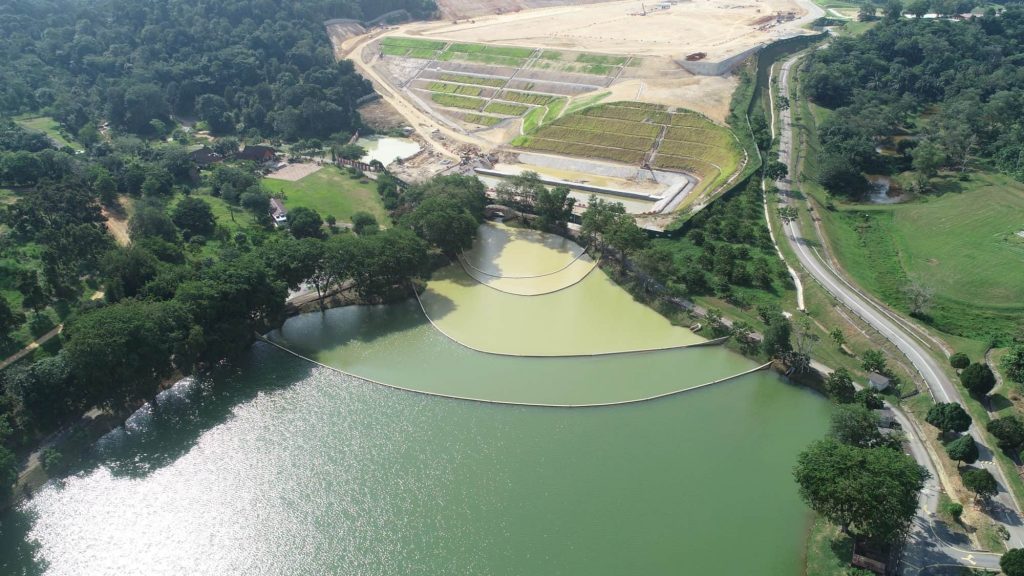By Khoo Boon Keat, Lead Environmental Manager, Safety, Health and Environmental Department
When undertaking a project of this nature, there are a number of environmental challenges that we face during construction.
The role of the Environmental Management Team is to ascertain how we are going to minimise the impact of these challenges.
The two main factors we have encountered on the MRT SSP Line are:
- Soil Erosion and Sedimentation; and
- Noise
Soil Erosion and Sedimentation
Soil erosion refers to the displacement of exposed soil from land clearing or excavation mainly due to rain. The most effective method of reducing sedimentation is soil erosion control.
This is achieved using a variety of methods such as temporarily covering the exposed soil with organic erosion control blankets or permanently turfing.
Below you can see an example from our Taman Naga Emas site.

The sediment-laden water flowing from the site is diverted into temporary drains which flow into ponds called silt traps or sediment basins.
These ponds let the heavier sediment to settle while allowing the less sedimented water to decant and discharge into public drains.
Other sediment control structures such as silt fences are also employed to prevent the sediment flowing out of the site.
For sites undergoing massive earthworks, we have employed more creative measures such as deploying mobile mechanical treatment plants to remove the sediment and erecting silt curtains in a pond (see below) where the silt curtain serves as an underwater filter that effectively separates much of the silt from the water.

Noise
As the MRT SSP Line traverses within tight corridors and densely populated areas, noise pollution is a common threat.
Working at night is largely prohibited by local authorities, however, for mega projects like the MRT SSP Line, such exceptions are granted.
Some activities such as launching of the Segmental Box Girders (SBG) that make up the viaduct structure are deemed too high-risk for public safety and can only be carried out at night.
As a result we have erected temporary noise barriers near residential areas and schools which serve as an effective measure to reduce noise levels from the worksite.

Our Public Relations and Stakeholder Management Team have also actively engaged with the residents to explain the duration of the disturbance, measures put in place and to solicit their feedback and address their concerns.
Raising Standards
Our due diligence has also extended to ensuring our contractors and sub-contractors comply and exceed the regulatory requirements.
This includes having more qualified and experienced personnel, additional monitoring for noise levels and additional reporting and planning.
Not only have we detailed such requirements in the General and Particular Specifications, as well as clearly specifying these items in the Bill of Quantities, but there is also sufficient financial allocation for the contractors to ensure full compliance to these requirements.
Our training workshops have been critical to this compliance, with all MRT SSP Line personnel undergoing environmental management courses covering a range of modules.
All this is done to build capacity and induce behavioural change among contractors. As an added incentive, we have introduced a ‘pain and gain’ mechanism to encourage contractors to adopt best management practices for environmental enhancement.
We are proud to say that so far, we have observed a gradual but encouraging improvement line-wide.

